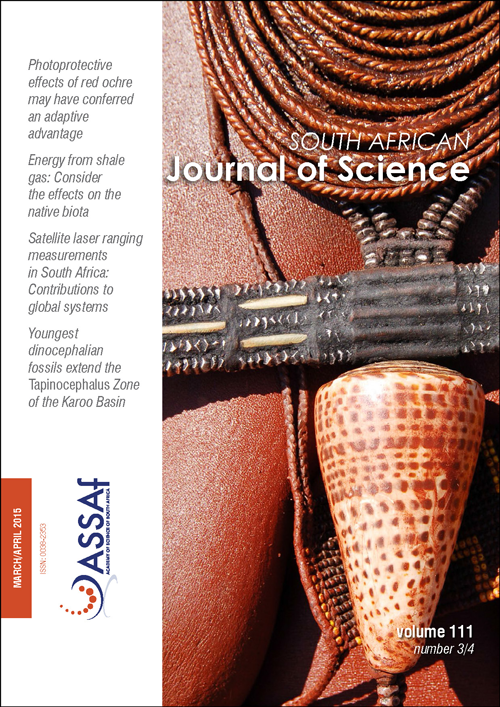Satellite laser ranging measurements in South Africa: Contributions to earth system sciences
DOI:
https://doi.org/10.17159/sajs.2015/20130193Keywords:
space geodesy, satellite laser ranging, precise orbit determination, International Laser Ranging Service, earth sciencesAbstract
This contribution reassesses progress in the development of satellite laser ranging (SLR) technology and its scientific and societal applications in South Africa. We first highlight the current global SLR tracking stations within the framework of the International Laser Ranging Service (ILRS) and the artificial satellites currently being tracked by these stations. In particular, the present work focuses on analysing SLR measurements at Hartebeesthoek Radio Astronomy Observatory (HartRAO), South Africa, based on the MOBLAS-6 SLR configuration. Generally, there is a weak geometry of ILRS stations in the southern hemisphere and the SLR tracking station at HartRAO is the only active ILRS station operating on the African continent. The SLR-derived products – such as station positions and velocities, satellite orbits, components of earth’s gravity field and their temporal variations, earth orientation parameters – are collected, merged, achieved and distributed by the ILRS under the Crustal Dynamic Data Information System. These products are used in various research fields such as detection and monitoring of tectonic plate motion, crustal deformation, earth rotation, polar motion, and the establishment and monitoring of International Terrestrial Reference Frames, as well as modelling of the spatio-temporal variations of the earth’s gravity field. The MOBLAS-6 tracking station is collocated with other geodetic techniques such as very long baseline interferometry and Global Navigation Satellite Systems, thus making this observatory a fiducial geodetic location. Some applications of the SLR data products are described within the context of earth system science.
Published
Issue
Section
License

All articles are published under a Creative Commons Attribution 4.0 International Licence
Copyright is retained by the authors. Readers are welcome to reproduce, share and adapt the content without permission provided the source is attributed.
Disclaimer: The publisher and editors accept no responsibility for statements made by the authors
How to Cite
- Abstract 459
- PDF 424
- EPUB 207
- XML 216












.png)